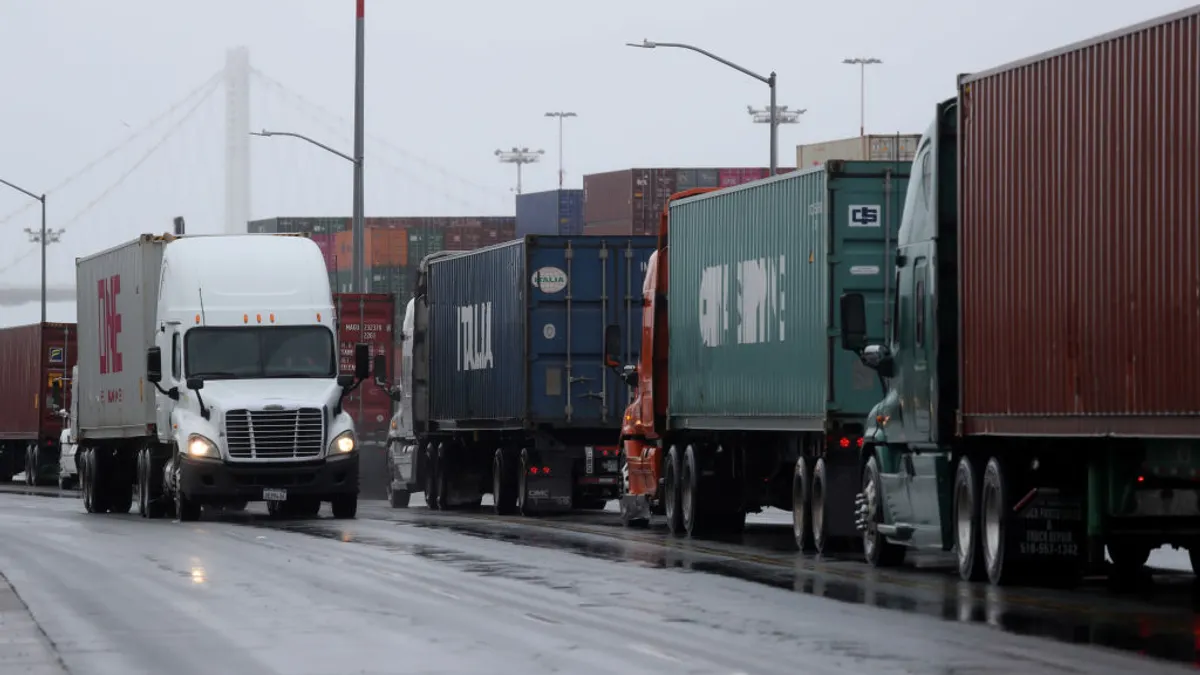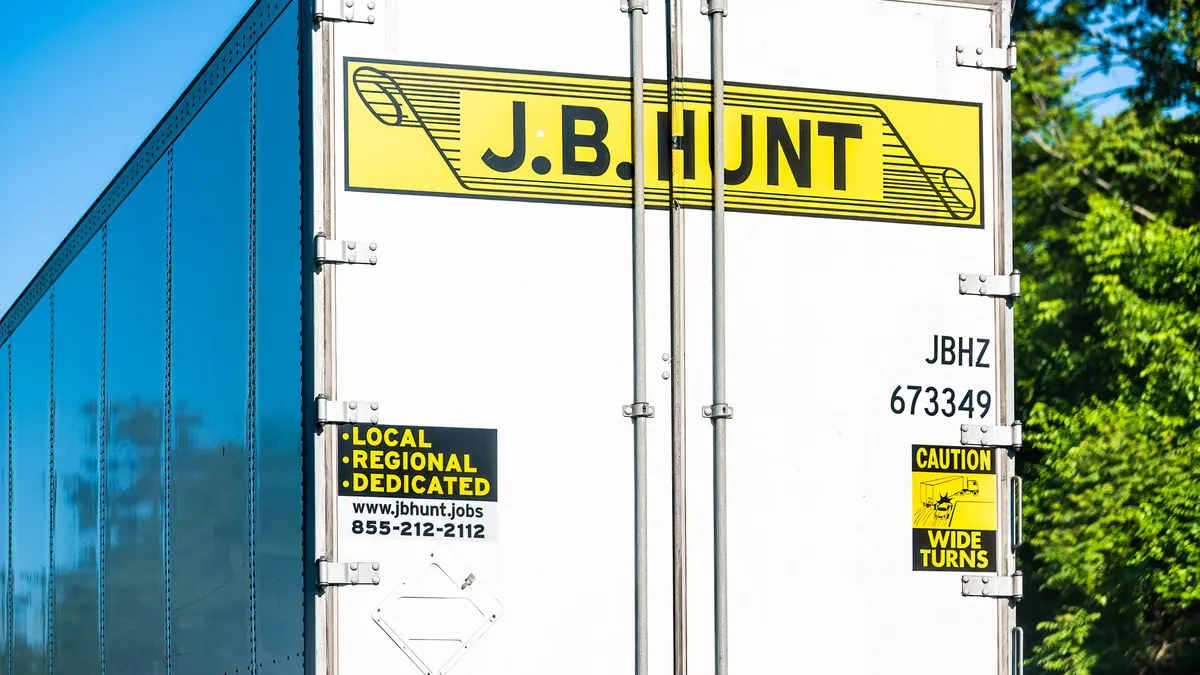Dive Brief:
- Spot load posts on the DAT load board were up nearly 130% YoY in March. But capacity continues to be an issue, with truck postings falling almost 7% YoY. Comparing levels to March 2020 is difficult, given the freight environment in the early days of the pandemic. But spot posts were up even more (232%) compared to the same period in 2019
- The strong demand for spot loads and the lack of capacity has resulted in rates maintaining an elevated level. Spot rates were up YoY and MoM in March across van, reefer and flatbed.
- The supply-demand imbalance has pushed up the DAT load-to-truck ratio across trucking modes, increasing 100% YoY for van, almost 285% YoY for flatbed and 117% for reefer. But van and reefer ratios did each fall more than 23% compared to February.
DAT load-to-truck ratio
Dive Insight:
The overall freight environment has seen strong demand over the last few months, as consumer spending remains strong and weighted toward goods rather than services.
"The strength in the spot market is, of course, not new," Avery Vise, vice president of trucking at FTR Transportation Intelligence, said in an email Monday. "Loads and rates have been running well ahead of year-earlier levels since the middle of 2020."
Vise pointed to stimulus checks in consumers' pockets as a driver of spending. And a dearth of truck drivers in the market stemming from a downturn in licensing for new drivers, and "the sluggishness with which experienced drivers are returning," has impacted capacity.
This is an environment that trucking companies acknowledged in their most recent round of earnings calls, which mostly wrapped up at the beginning of February.
"On the supply side, structural truck driver availability constraints and OEM production challenges are expected to continue to limit industry capacity growth for at least the next several quarters," Werner Enterprises President, CEO and Vice Chairman Derek Leathers said in February. "On the demand side, our key customers are producing strong sales that are expected to continue as the economy recovers and additional COVID stimulus packages are implemented."
The market demand has led to increases in freight spending, which was up nearly 17% YoY in February, according to the most recent Cass report. And it's a trend that doesn't show much sign of decelerating, with Cass saying that more acceleration in expenditures is "a high probability in the coming months."
Vise said vaccinations and eased restrictions on licensing bureaus should begin to help with driver availability, but not right away. Government data shows the drivers that left the market were younger and not the older individuals who would be more at risk to COVID-19, according to Vise.
"We do not expect any noticeable easing of tight capacity until late this year," Vise said.
Over time, the trucking market dynamics will begin to affect contract rates between shippers and carriers.
Dean Croke, principal industry analyst at DAT Freight & Analytics, advised watching the spread between spot and contract rates.
"Currently, the average van spot rate is 6 cents a mile lower than the average contract van rate, a sign that motor carriers have sufficient capacity to cover their assigned loads and are not feeling incentivized to look to the spot market for higher-paying freight," Croke said.
Volatility and uncertainty have driven a trend toward shorter-term contracts, Vise said. "We are already seeing contract truckload rates around 10% higher year over year and expect them to remain above that level at least for the rest of the year."











